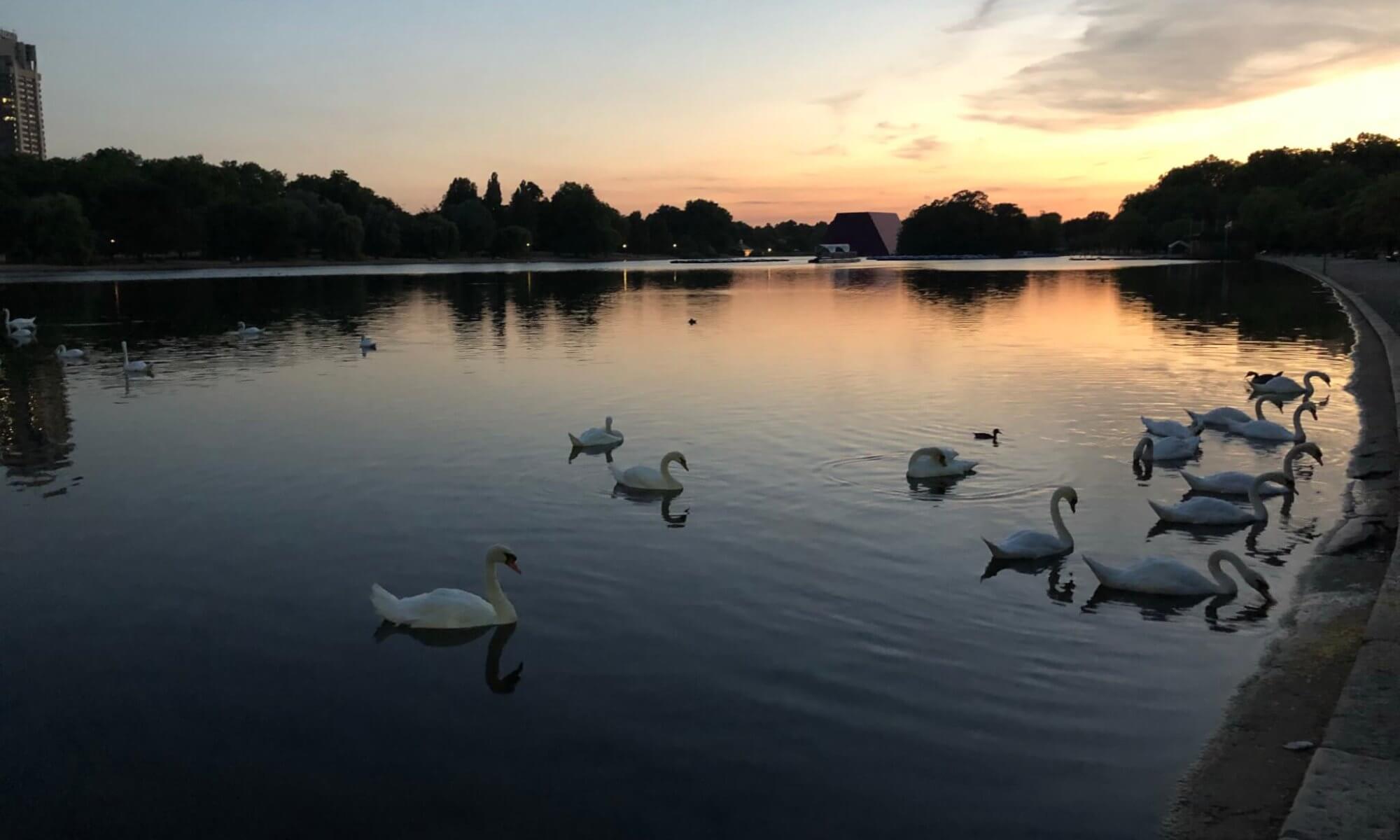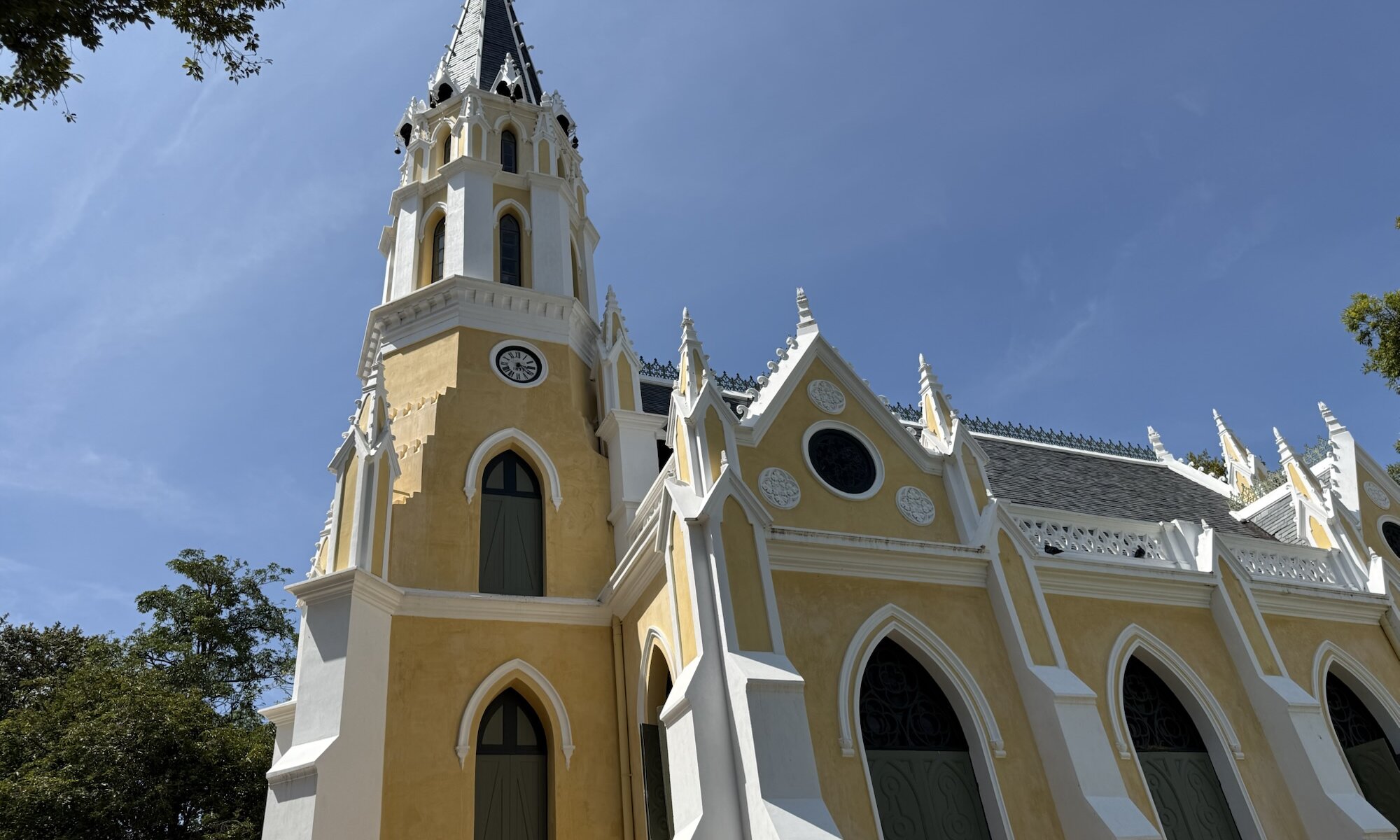Wat Niwet Thammaprawat in พระนครศรีอยุธยา is a fascinating temple with a distinctly European appearance, standing out amid the traditional Thai architectural landscape. Built in the late 19th century during the reign of King Rama V, this Buddhist temple was designed by a European architect under royal patronage. The temple’s unique Gothic Revival style, complete with pointed arches, stained glass windows, and a bell tower, gives it the appearance of a Christian church rather than a typical Thai wat. This unusual design was intended to demonstrate the king’s openness to Western influence while maintaining the temple’s sacred Buddhist function.
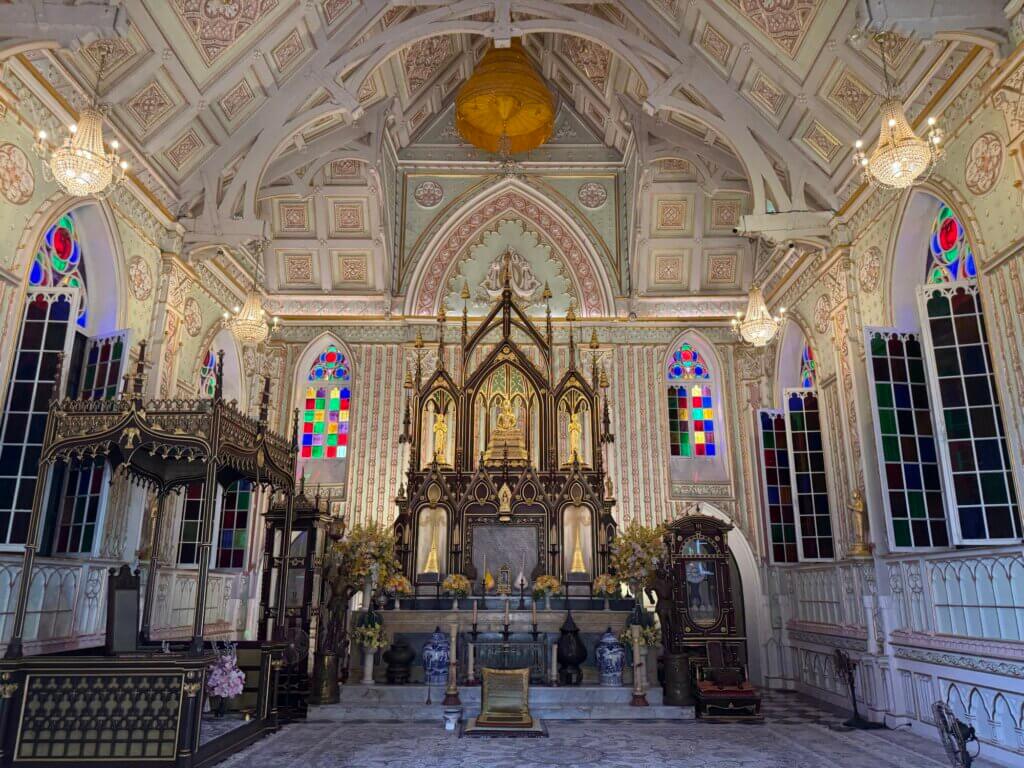
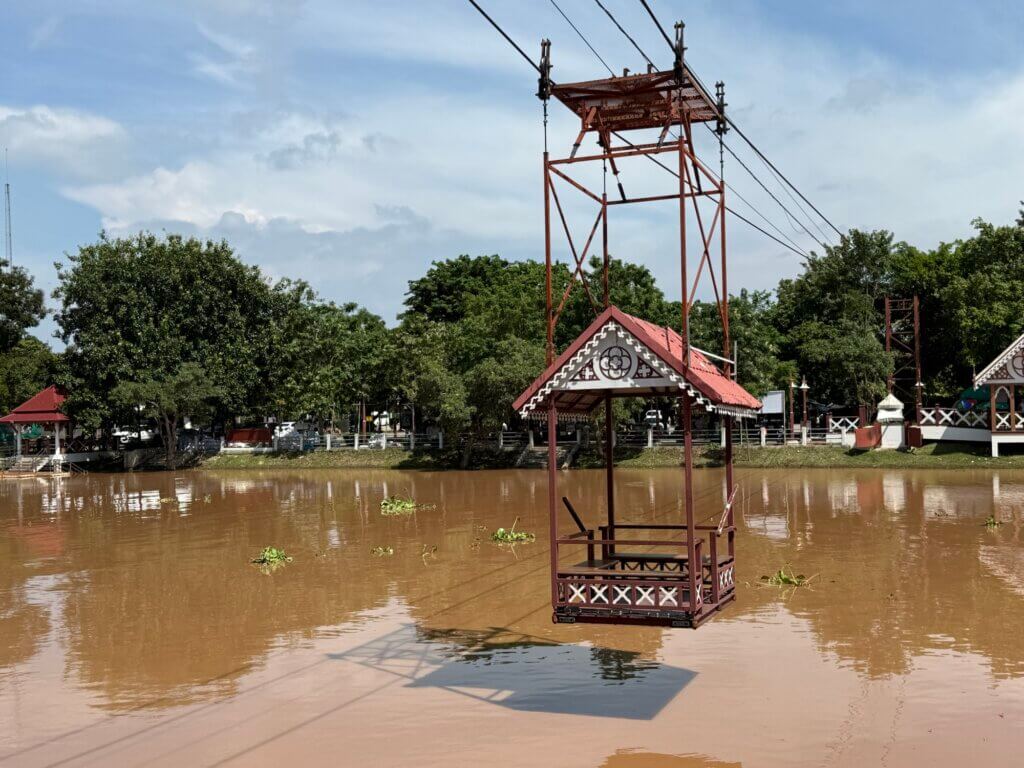
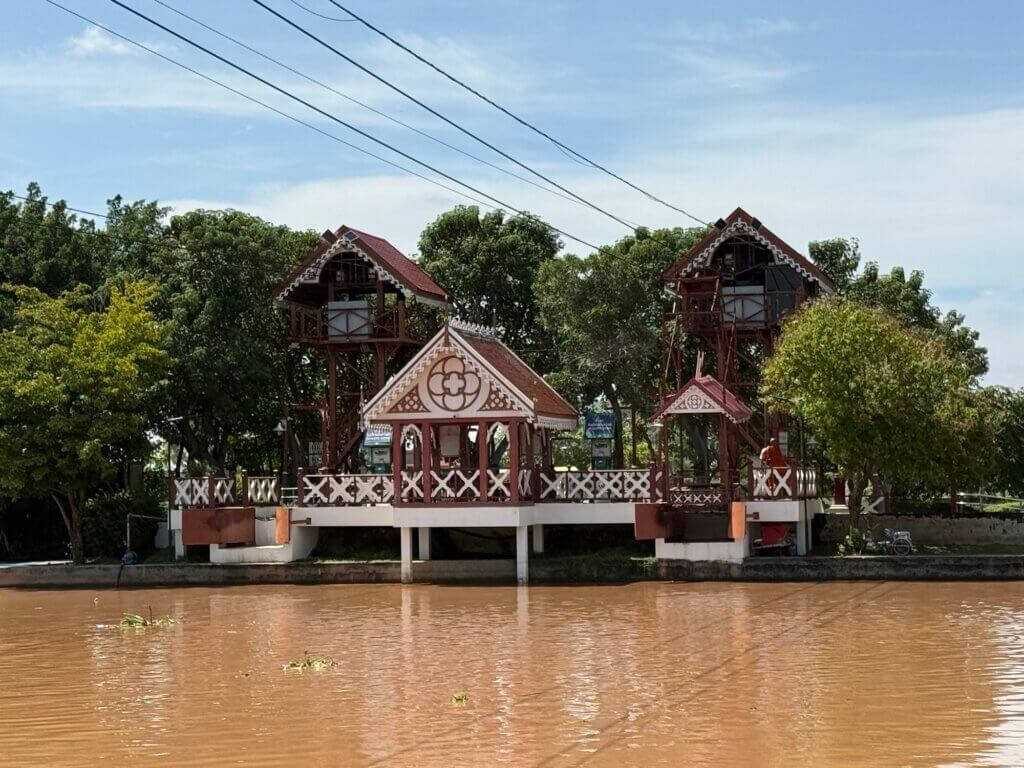
The temple is situated on an island within a man-made canal, which adds to its distinctive charm and sense of seclusion. Visitors can explore the ornate interior, which contains numerous Buddha images and murals reflecting traditional Thai religious themes despite the Western facade. The contrast between the exterior Gothic style and the richly decorated Buddhist space inside offers an intriguing blend of cultural aesthetics, symbolising a period of modernization and cultural exchange in Siam’s history. The temple grounds are serene and beautifully maintained and provide an atmospheric setting for contemplation and photography.
One remarkable aspect of Wat Niwet is the cable car that connects the island to the mainland. This relatively recent addition serves both practical and tourist purposes, allowing easier access over the encircling water without disturbing the tranquil surroundings. The cable car ride offers visitors a gentle, picturesque approach to the temple, framing unique views of the surrounding river landscape and the historic ruins of พระนครศรีอยุธยา nearby. This mode of transport blends modern convenience with the cultural heritage site, enhancing the visitor experience.
The reason behind Wat Niwet’s European church-like appearance lies in the political and cultural context of 19th-century Siam. King Rama V was keen to present his kingdom as a modern nation capable of engaging with Western powers on equal footing. By commissioning a Buddhist temple in a Gothic style, he created a symbol of religious tolerance and progressive thinking. Wat Niwet thus stands as a testament to a fascinating chapter in Thai history, when tradition met innovation and East mingled with West in an unexpected but harmonious architectural form.
Wat Niwet
พระนครศรีอยุธยา
Thailand
Loading map...

